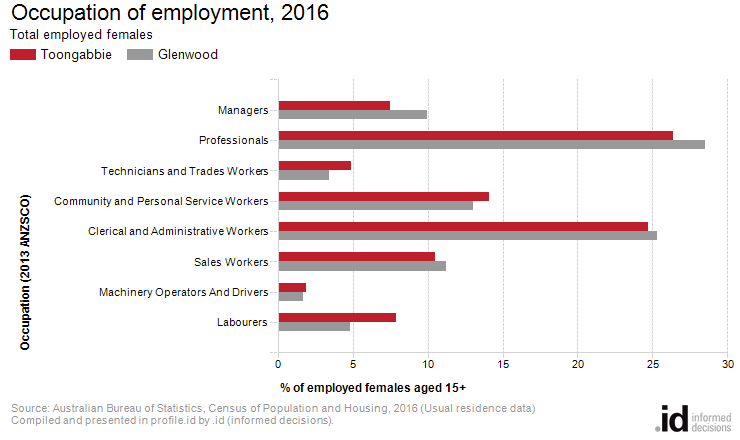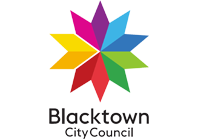Toongabbie
Occupation of employment
There were more female professionals in Toongabbie in 2016 than any other occupation.
Toongabbie's occupation statistics quantify the occupations in which the residents work (which may be within the residing area or elsewhere). This will be influenced by the economic base and employment opportunities available in the area, education levels, and the working and social aspirations of the population. When viewed with other indicators, such as Educational Qualifications and Individual Income, Occupation is a key measure for evaluating Toongabbie's socio-economic status and skill base.
Derived from the two Census questions:
'In the main job held last week, what was the person's occupation?' and 'What are the main tasks that the person himself/herself usually performs in that occupation?'
Employed persons aged 15 years and over
Source: Australian Bureau of Statistics, Census of Population and Housing (opens a new window) 2011 and 2016. Compiled and presented by .id (opens a new window)(informed decisions).
(Usual residence data)

Compiled and presented in profile.id by .id (informed decisions).

Compiled and presented in profile.id by .id (informed decisions).
Dominant groups
An analysis of the jobs held by the female resident population in Toongabbie in 2016 shows the three most popular occupations were:
- Professionals (269 females or 26.4%)
- Clerical and Administrative Workers (252 females or 24.7%)
- Community and Personal Service Workers (143 females or 14.1%)
In combination these three occupations accounted for 664 females in total or 65.2% of the employed female resident population.
In comparison, Glenwood employed 28.5% in Professionals; 25.3% in Clerical and Administrative Workers; and 13.0% in Community and Personal Service Workers.
The major differences between the jobs held by the female population of Toongabbie and Glenwood were:
- A larger percentage of females employed as Labourers (7.9% compared to 4.8%)
- A larger percentage of females employed as Technicians and Trades Workers (4.9% compared to 3.4%)
- A smaller percentage of females employed as Managers (7.5% compared to 9.9%)
- A smaller percentage of females employed as Professionals (26.4% compared to 28.5%)
Emerging groups
The number of employed females in Toongabbie increased by 71 between 2011 and 2016.
The largest change in the occupations of female residents between 2011 and 2016 in Toongabbie was for those employed as:
- Professionals (+51 females)
